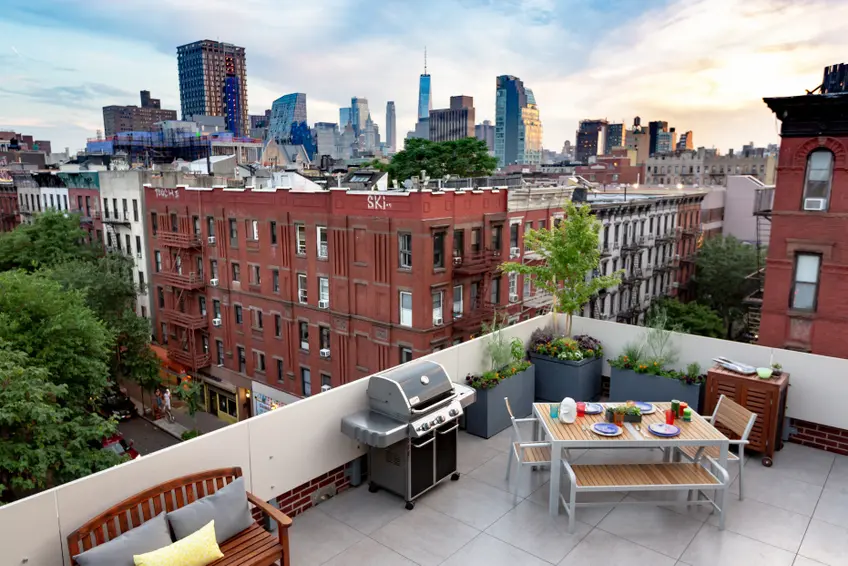 Roof deck with view over the Lower East Side from 32 Clinton Street, #PH (Compass)
Roof deck with view over the Lower East Side from 32 Clinton Street, #PH (Compass)
The Department of City Planning notes that 150,000 Americans move to New York every year, and even the coronavirus pandemic has not dulled the dream for many people. But at any time, would-be city dwellers should note that New York City is not a monolith, but rather a series of diverse neighborhoods that can be like completely different cities in terms of price, housing types, and local amenities.
Neighborhood Information and Everyday Life
The right neighborhood for a buyer is entirely subjective, but there are certain things everyone should keep in mind during their search. How far is this place from the office, and how long and convenient will the commute be? For those moving with children, what is the quality of the area schools? Likewise, if you’re moving with a dog, are there parks or dog runs within walking distance of the building?
Schools and parks are not the only local amenities to keep in mind. Many listings will tout proximity to supermarkets, drugstores, dry cleaners, and other conveniences among the perks. Others mention easy access to trendy boutiques and popular restaurants, bars, and nightlife that might be essential for some, but nuisances to others. Finally, while New York is synonymous with Times Square or Wall Street to many, some people might not want to live in the heart of such tourist-heavy areas.
Additionally, the right neighborhood can sometimes be determined by whether one plans to buy or rent. Some areas show high rates of ownership in the form of an abundance of condos and co-ops; the Upper East Side, Upper West Side, Tribeca, and Soho are prime examples of this. Other areas are dominated by rental buildings and thus attract a younger population.
"God willing, COVID-19 will pass, but neighborhoods will endure, so invest in a good one." — Vitali Ogorodnikov
Property Types
Whether your intent is to buy or rent your next home, New York has a wide variety of styles and sizes offering everything from magnificent 19th-century brownstones and pre-war classics all the way to the most modern and sophisticated luxury high-rises.
The term prewar is used to refer to buildings that went up before World War II. The Upper West Side and Upper East Side are especially rich in these buildings known for their distinctive architecture and large floor plans. Many of these are doorman buildings, but while some have been updated with a fitness room or roof deck, very few are known for their array of amenities.
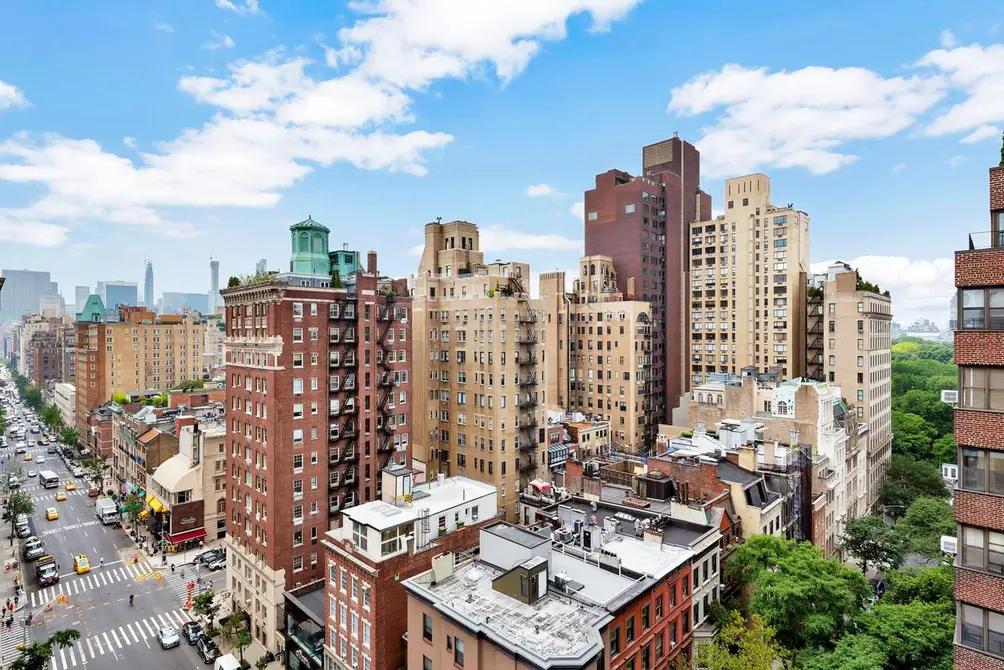 The mostly pre-war building stock of the Upper East Side (80th & Madison via Corcoran)
The mostly pre-war building stock of the Upper East Side (80th & Madison via Corcoran)
Post-war is a term used to describe buildings that went up between the 1950's and the 1970's. These buildings are generally 10-20 stories high and attract attention with their decorative facades and elaborate lobbies.
Most recently, a new crop of "supertalls" has attracted attention for its dizzying heights, luxurious finishes, and endless assortment of amenities. The sheer elevation allows for incredible skyline and river views, but the price of these apartments is almost as high as the buildings. Moreover, local activists and preservationists have not been happy about how this construction casts parks and prewar buildings in shadow.
Finally, it is important to remember that there is more to New York than just Manhattan. The further out one gets from there - think Riverdale and parts of Brooklyn - the likelier it is to find a townhouse or detached single-family home, much like one might find in suburbia, for an attainable price. This is the only way for New Yorkers to live completely self-sufficiently in the city; however, residents here are responsible for everything. A full guide to townhouse living may be found here.
Buy or Rent
The decision to rent or to own an apartment in New York City is a matter of a choice of lifestyle - and of economics, stability, and customization. CityRealty cannot tell you which one to choose, but we can share the pros and cons of each option.
Buying a New York apartment is often reserved for those who are settled in their lives, not to mention settled from a financial standpoint: Most buildings require at least a 10% down payment for condos and 25% for co-ops, and that doesn’t even go into closing costs that can include, but are not limited to, attorney fees, mortgage fees, and insurance payments. And even if a buyer is prepared financially, they cannot get in without the approval of the condo association or the infamous co-op board. It is a long and multifaceted process, but one that can ultimately prove worthwhile between tax benefits, the potential for the investment to appreciate, and the ability to customize an apartment.
Buying a New York apartment is often reserved for those who are settled in their lives, not to mention settled from a financial standpoint: Most buildings require at least a 10% down payment for condos and 25% for co-ops, and that doesn’t even go into closing costs that can include, but are not limited to, attorney fees, mortgage fees, and insurance payments. And even if a buyer is prepared financially, they cannot get in without the approval of the condo association or the infamous co-op board. It is a long and multifaceted process, but one that can ultimately prove worthwhile between tax benefits, the potential for the investment to appreciate, and the ability to customize an apartment.
For those whose stay in New York is planned to be temporary, renting allows for greater flexibility, a simpler process, and fewer responsibilities and obligations. It also means one rent check a month and no mortgage, taxes, or closing costs to worry about. Costs can nevertheless add up, and renters cannot use them to build equity or as tax write-offs. Renters should also be prepared for the fact that they will have little control over their living situation, and bear in mind that the landlord can make or break their New York experience.
Cool Factor
“It” neighborhoods and most desired housing types are constantly evolving, but there are some certainties: New York’s reputation as a city of dreams and opportunity will continue to help it attract a creative and diverse population that have already made it into the financial and cultural capital of the world. The city is home to representatives of all major firms and industries, not to mention Broadway theaters, publishing houses, and various arts districts.
Besides its history and commerce, Manhattan real estate has an asset that few other cities in the world can match: It is indisputably one of the most prestigious cities to live in. Celebrities of all stripes reside in the most prominent neighborhoods such as Fifth Avenue by Central Park, on Central Park West on the Upper West Side, or a trendy loft in the heart of Soho. For the rest of us, the city’s lofty reputation and equally high residential prices can make even renting here feel like a sign that one has made it.
As central Manhattan neighborhoods have become out of reach for most of the city's young and creative class, a new belt of neighborhoods, mainly uptown and across the East River has attracted many of the city's most interesting venues, events, and restaurants. Recently, Time Out magazine published its annual list of 40 coolest neighborhoods in the world where New York's own Bedford-Stuyvesant ranked number four on the list. The publication says that due to a rather miserable 2020, neighborhoods that function more as close-knit communities, where residents and businesses look out for one another topped the list. Below is our take on the 'coolest' neighborhoods in NYC. Ones where small shops still flourish, public space is being improved, and outdoor dining has thrived.
Besides its history and commerce, Manhattan real estate has an asset that few other cities in the world can match: It is indisputably one of the most prestigious cities to live in. Celebrities of all stripes reside in the most prominent neighborhoods such as Fifth Avenue by Central Park, on Central Park West on the Upper West Side, or a trendy loft in the heart of Soho. For the rest of us, the city’s lofty reputation and equally high residential prices can make even renting here feel like a sign that one has made it.
As central Manhattan neighborhoods have become out of reach for most of the city's young and creative class, a new belt of neighborhoods, mainly uptown and across the East River has attracted many of the city's most interesting venues, events, and restaurants. Recently, Time Out magazine published its annual list of 40 coolest neighborhoods in the world where New York's own Bedford-Stuyvesant ranked number four on the list. The publication says that due to a rather miserable 2020, neighborhoods that function more as close-knit communities, where residents and businesses look out for one another topped the list. Below is our take on the 'coolest' neighborhoods in NYC. Ones where small shops still flourish, public space is being improved, and outdoor dining has thrived.
Greenpoint
Over the past few years, Greenpoint has seen an incredible transformation from an industrial Polish enclave to a haven for artists to one of the most exciting residential neighborhoods in the five boroughs. Greenpoint Landing has garnered recent attention for its impact on the local skyline, but exciting local retail and restaurants, a ferry stop, and a slowly growing collection of boutique condos have always been attractive.
East Williamsburg - Bushwick
The last episode of Girls aired in spring 2017, but its setting remains very much on New Yorkers' minds: As artists and creative types got priced out of the heart of Williamsburg (centered around the Bedford Avenue L stop), they looked to East Williamsburg and Bushwick. The area remains home to a vibrant art scene, and has seen Michelin-starred restaurants move in as well as exciting new housing on the rise.
Sunnyside
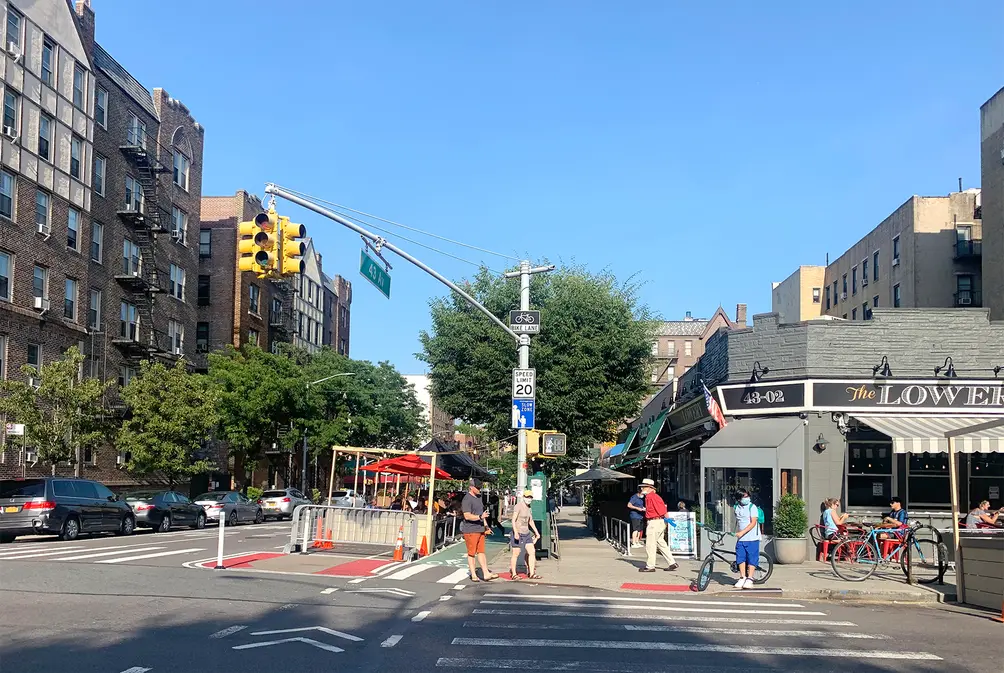
As the Hunter’s Point section of Long Island City experiences a recent building boom, it’s getting harder to ignore the nearby Sunnyside. Residents can also enjoy waterfront living, and a wide variety of ethnic cuisine spawned the annual Taste of Sunnyside food festival. The Sunnyside Gardens Historic District protects part of the neighborhood, but we may yet see more residential units on the rise.
Astoria
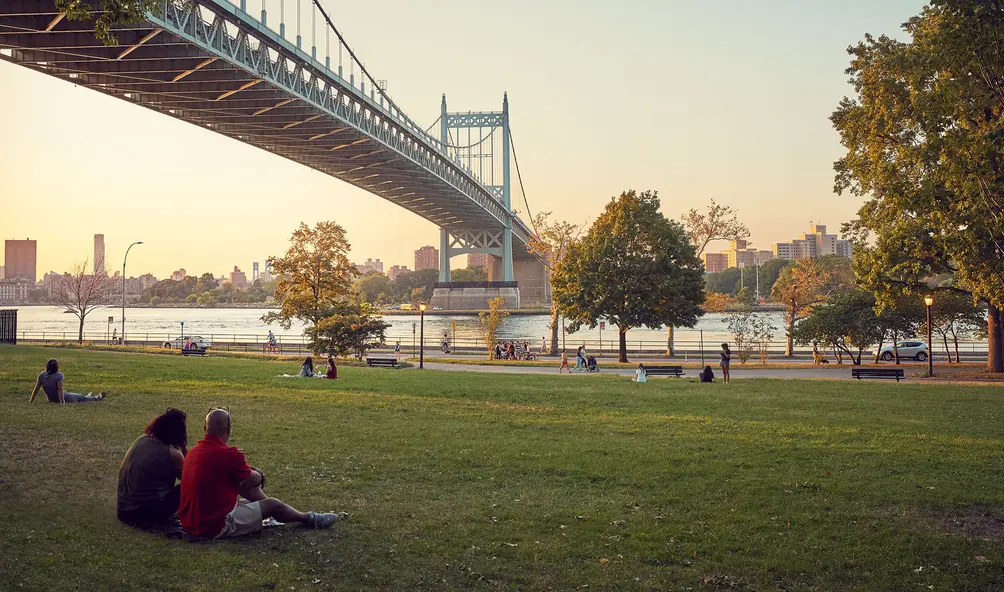 (via Hallets Point / Durst Organization)
(via Hallets Point / Durst Organization)
Throughout the 20th century, Astoria was primarily known as the home of several furniture makers and factories, as well as one of the initial centers of American filmmaking. The filming of some of the most popular shows on television continues in Astoria, but the area is seeing something of a residential renaissance. Some of the old factories are being converted to condominiums, and a penthouse listed for $1.65 million at new development The Rowan recently set a new sales record for Queens.
Bedford-Stuyvesant
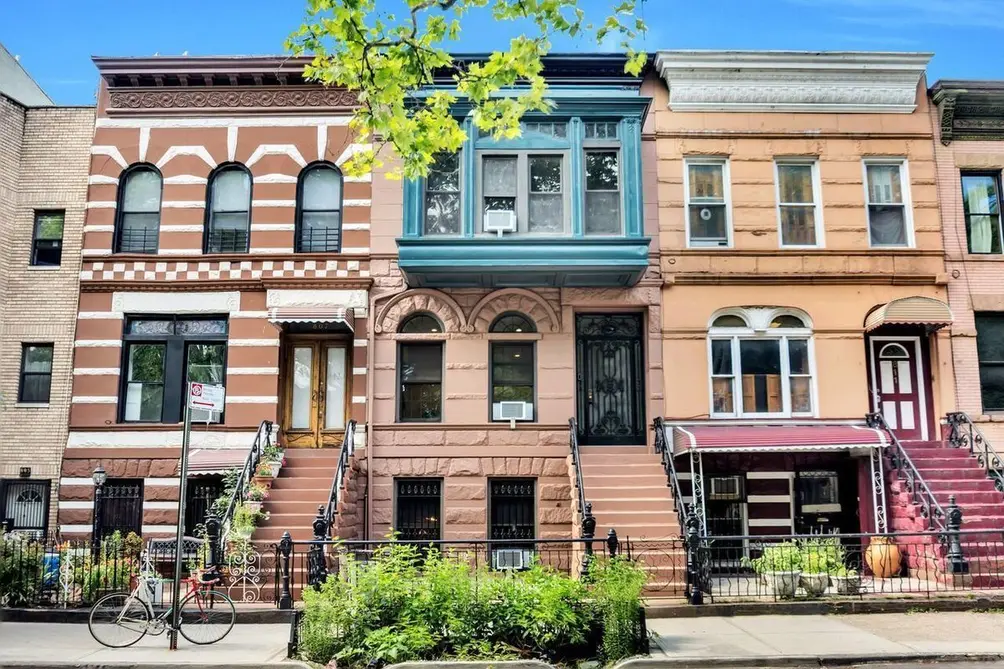 809 Halsey Street (Corcoran)
809 Halsey Street (Corcoran)
As Harlem (see below) started to get too overcrowded, a new African-American community took hold in the Bedford-Stuyvesant section of Brooklyn. More recently, while many of the streets still house many historic brownstones, Time Out described it as “New York’s great incubator of the future.” Not only has the neighborhood served as a main hub of the Black Lives Matter movement, but it is also home to an eclectic dining scene and strong sense of community.
Lower East Side
More than a century ago, the Lower East Side was defined by its tenement buildings and population of immigrants. It has seen something of a residential renaissance in recent years, and the arrival of Essex Crossing has thoroughly transformed the area with new shopping and dining, a new home for the Essex Market, a sprawling new food hall, a 15,000-square-foot public park, and eye-catching yet respectful architecture.
Harlem
At the beginning of the 20th century, the arrival of African-American artists, performers, and intellectuals in Upper Manhattan gave rise to a rich cultural movement known all over the world as the Harlem Renaissance. About 100 years later, in the wake of a rezoning that allows for taller buildings along 125th Street, new retail is moving in and new commercial, cultural, and residential development is on the rise.
Prospects Lefferts Garden
For a time, many Brooklyn residents were drawn to Prospect Lefferts Gardens for its easy access to Prospect Park, Crown Heights, and Flatbush. However, it has emerged as an in-demand neighborhood in its own right for its ability to offer a peaceful residential atmosphere with easy access to some of Brooklyn and Manhattan’s most bustling areas. Its diverse architectural aesthetic, from historic townhouses to sleek new condos, also offers something for everyone.
Meatpacking District - West Village
The Meatpacking District occupies a small space between the West Village and Chelsea, yet holds the distinction of being one of New York's most historically, architecturally, and culturally distinct neighborhoods. One hundred years ago, it was primarily known for its markets, slaughterhouses, and packing plants. Those buildings have since been converted to some of the city's hottest galleries, restaurants, shops, and nightlife. Much of the area is protected by the boundaries of the Gansevoort Market Historic District, but it has seen some eye-catching offices and glassy new condos take shape in recent years.
East Village
The East Village entered the New York lexicon in the 1960's thanks to savvy marketing, but an influx of artists and creative types was instrumental in carving out a new community in a section of what was then considered the Lower East Side (see above). Its reputation as an artists' enclave attracted more affluent residents, and its proximity to New York University has made it popular among students, yet it remains a distinctive neighborhood.
Inwood-Kingsbridge
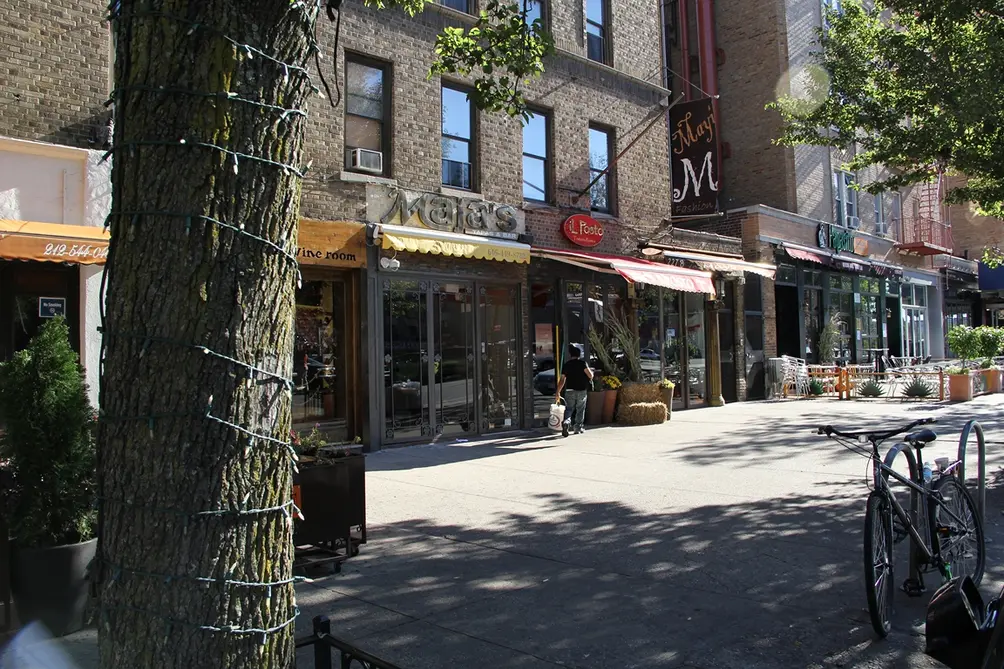 (CityRealty)
(CityRealty)
Inwood is about a 45-minute subway ride from Midtown, but its abundant green space and independent retail offer a completely different atmosphere. It is locals’ hope that it can stay that way; earlier this summer, the Appellate Division of the New York State Supreme Court unanimously ruled that a planned rezoning of Inwood could proceed, clearing the way for approximately 5,000 new housing units in Upper Manhattan.

 6sqft delivers the latest on real estate, architecture, and design, straight from New York City.
6sqft delivers the latest on real estate, architecture, and design, straight from New York City.
